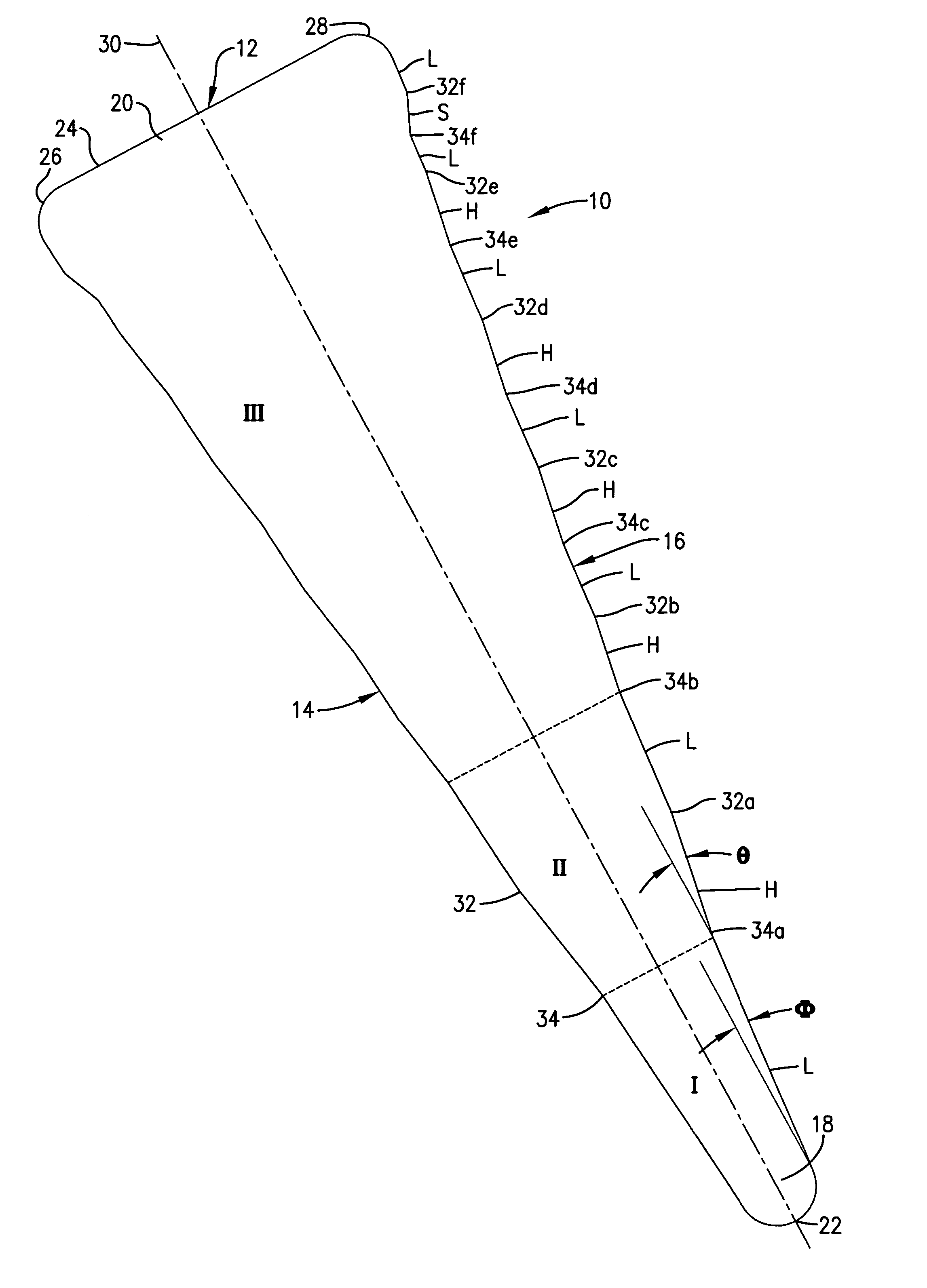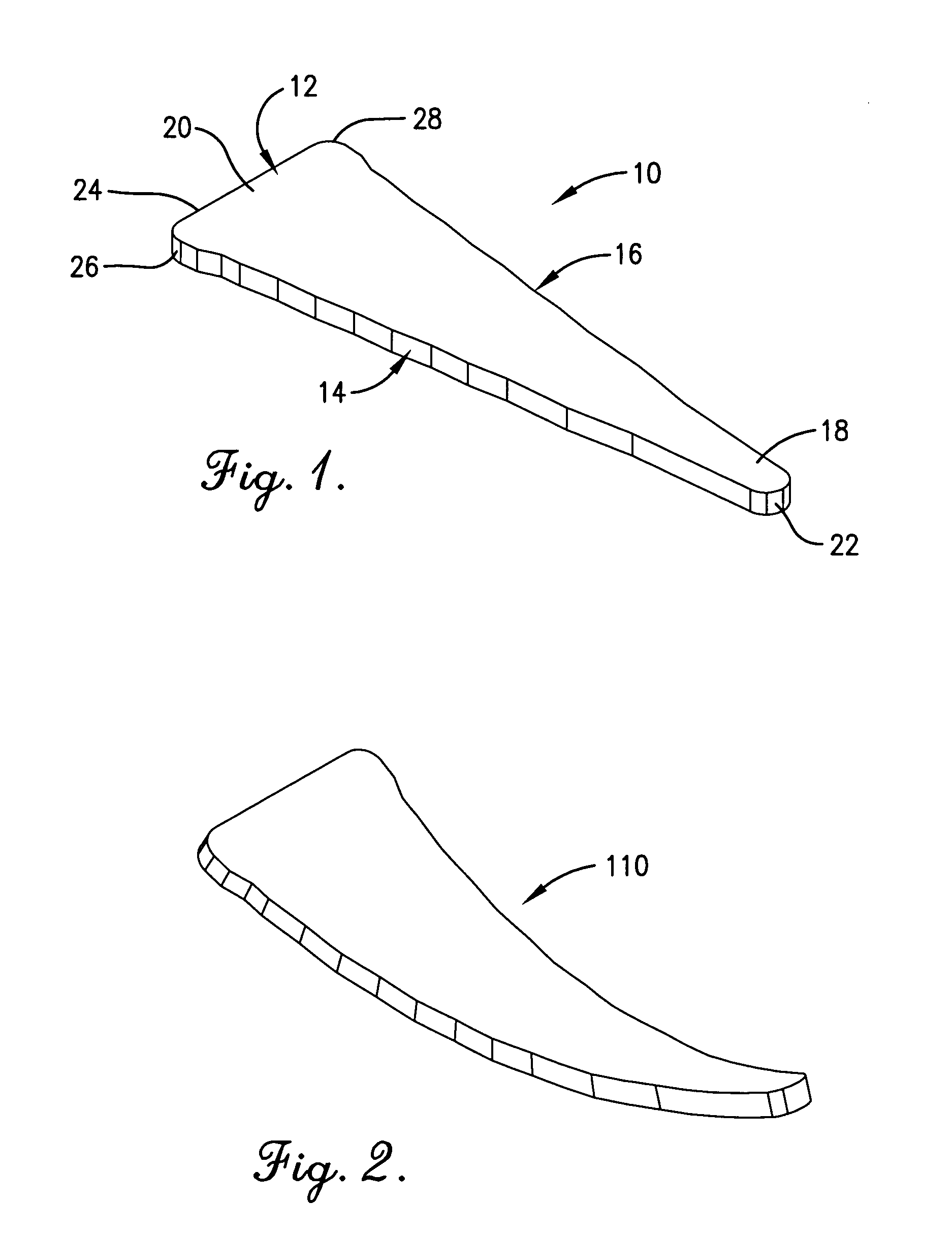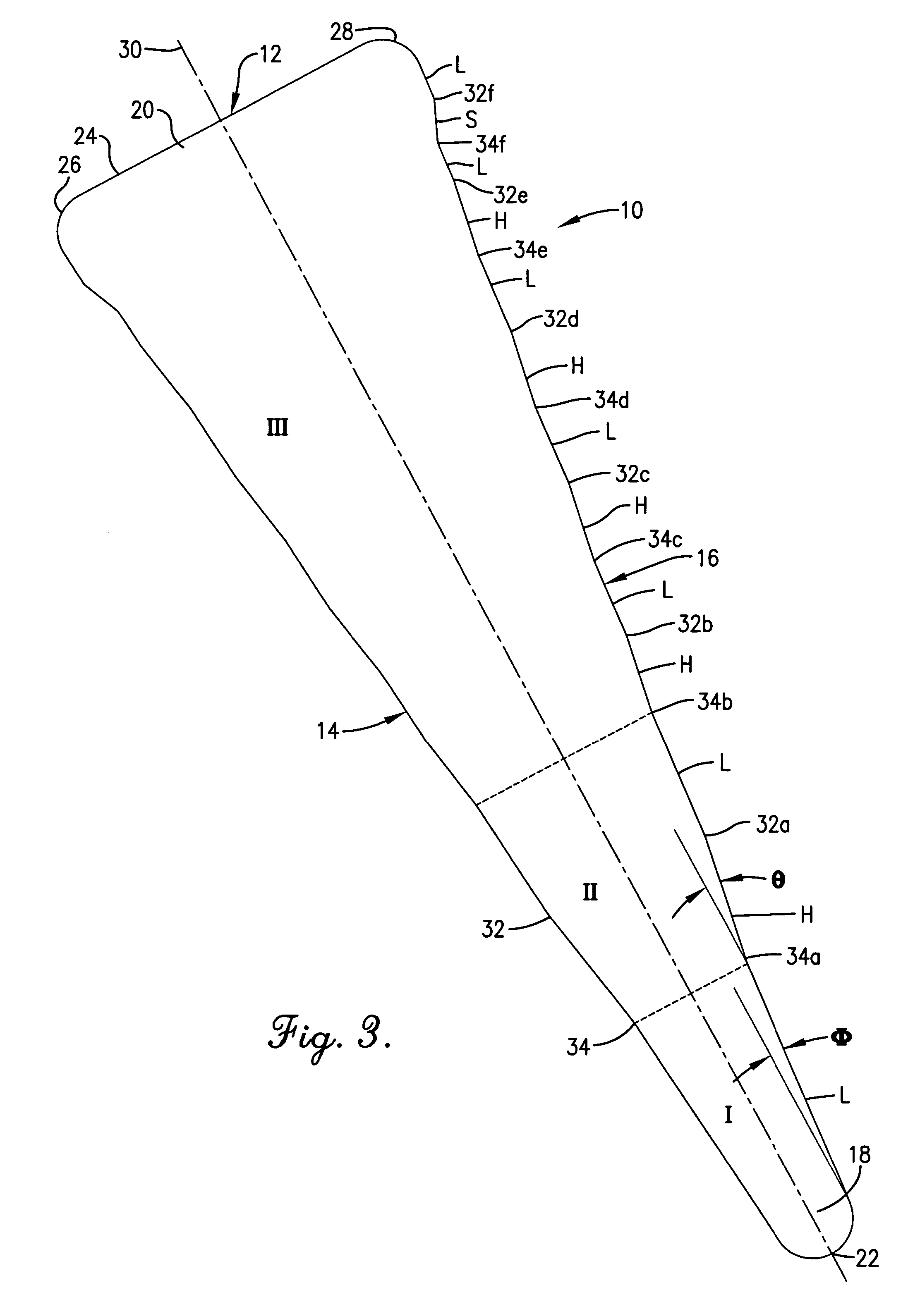Retaining wedge for concrete forms
a technology for concrete forms and wedges, applied in the direction of forming/stuttering elements, building parts, fastening means, etc., can solve the problems of raising safety issues, exacerbate the problem, and conventional wedges can also be difficult to insert into the retaining slots, so as to facilitate the quick starting of the wedge, raise the safety issue, and increase the risk of losing the wedge
- Summary
- Abstract
- Description
- Claims
- Application Information
AI Technical Summary
Benefits of technology
Problems solved by technology
Method used
Image
Examples
Embodiment Construction
[0013]The present invention is susceptible of embodiment in many different forms. While the drawings illustrate and the specification describes certain preferred embodiments of the invention, it is to be understood that such disclosure is by way of example only. There is no intent to limit the principles of the present invention to the particular disclosed embodiments.
[0014]With initial reference to FIG. 1, the wedge 10 therein disclosed comprises a generally triangular or trapezoidal body 12 that is preferably constructed from flat, sheet steel material so as to present a constant thickness throughout its entire length and width. Body 12 presents a pair of opposite side edges 14 and 16 that mutually diverge from a tip 18 at one end of body 12 toward a head 20 at the opposite end thereof. Tip 18 has a rounded point 22, while head 20 has a straight, flat end 24 that is perpendicular to the longitudinal axis of body 12. Head 20 is enlarged across its width relative to the rest of the ...
PUM
 Login to View More
Login to View More Abstract
Description
Claims
Application Information
 Login to View More
Login to View More - R&D
- Intellectual Property
- Life Sciences
- Materials
- Tech Scout
- Unparalleled Data Quality
- Higher Quality Content
- 60% Fewer Hallucinations
Browse by: Latest US Patents, China's latest patents, Technical Efficacy Thesaurus, Application Domain, Technology Topic, Popular Technical Reports.
© 2025 PatSnap. All rights reserved.Legal|Privacy policy|Modern Slavery Act Transparency Statement|Sitemap|About US| Contact US: help@patsnap.com



